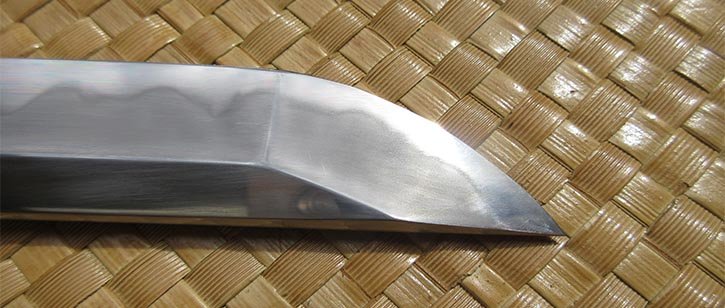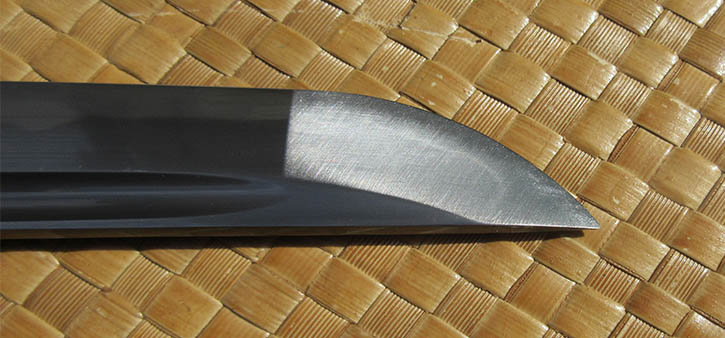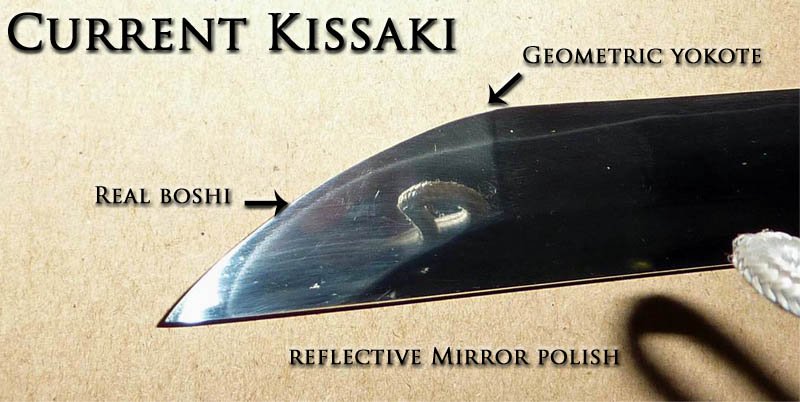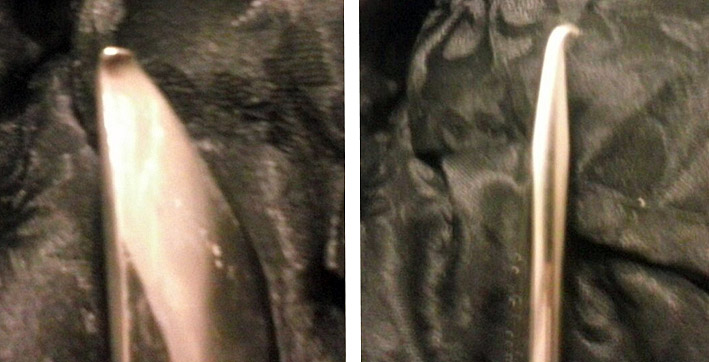Recent Articles
-
Christmas Sword Buying Guide 2025
Dec 03, 25 10:53 PM
Kissaki

The kissaki is the tip section of a Japanese sword, starting from the Yokote line that separates the rest of the blade from the tip.
A particularly short one is called a Kokissaki and was commonly seen on 12th century Tachi swords, the precursor to the Katana. A standard length tip is called a Chukissaki, and a long one, an Okissaki.
 From left to right, Ko, Chu and O Kissaki variants
From left to right, Ko, Chu and O Kissaki variantsBecause of its irregular shape and complex geometry compared to the rest of the blade, polishing a Kissaki is very time consuming work - especially if the blade is made from hard steel and even more so if it has a hamon temper line that needs to be brought out.
Indeed, it can take as long to polish the Kissaki as it takes to polish the rest of the blade, as the rest of the blade can be polished using long strokes, while the tips surface area is complex and only a small section at a time can be polished. The video below, while not in English, does give you some idea of just how much time is needed to polish one properly.
For this reason, most swords under $300 do a rough counter-polish of the tip which is functional, but cosmetically unattractive.
To give you an example, below is a Katana that has been clayed and differentially hardened but given a rough counter polish to ensure the overall price of the sword is as low as possible.
 Example of a rough, counter polished kissaki
Example of a rough, counter polished kissakiFor most intents and purposes, a tip counter-polished like the one above is still 100% functional, but with a less smooth surface, may drag ever so slightly when compared to one that has been painstakingly polished like the example below.

To polish a tip so that it has a reflective mirror polish like the one a above takes at least 3-4 times as long as a rough counter-polish and because of the extra time and expense, is rarely seen on entry level swords.
Common Issues with Kissaki
Apart from cosmetically unappealing counterpolishing, the most common issue with the tip is if it hits a harder than expected target and the edge rolls as shown in the picture below.
 Example of a rolled tip, in this case, accidentally thrust into concrete..
Example of a rolled tip, in this case, accidentally thrust into concrete..If this happens, it is practically impossible to straighten out as the bent tip will be extremely weak and likely snap off if an attempt is made to straighten it.
As such, the only real course of action is to spend many hours filing it down and reshaping it into a basic Kokissaki.
I hope this information on Kissaki has been helpful. To return to Samurai Sword Terminology from Kissaki, click here

Buying Swords Online Can Be DANGEROUS!
Find the Best Swords in the:
Popular & Recommended ARTICLES

The ONLY true free online magazine for sword enthusiasts. Delivered once a month on the 1st day of the month, no filler and no BS, just the latest sword news & info delivered straight to your inbox.












